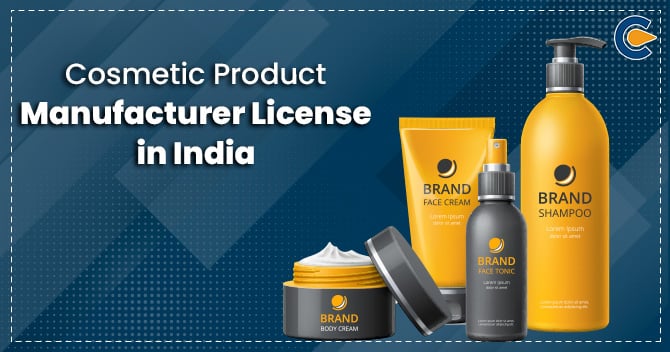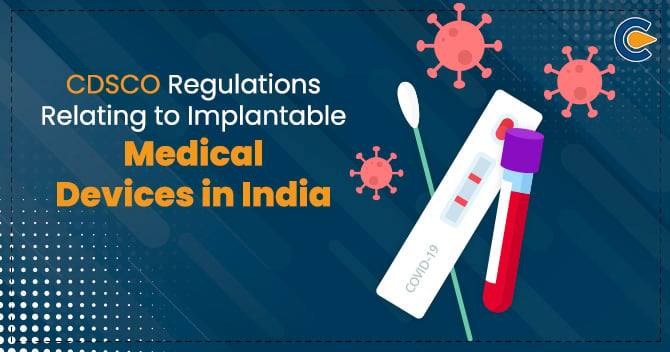The cosmetic market is growing in India, and so is the demand for cosmetics. Ever-increasing economic and social conditions have improved people’s living standards, and as a result, there is a boosted personal care. India is a young country in terms of age; nearly 80 % of the population in India is below the age of 35 years. The demand for cosmetic products in India is growing continuously, especially for products related to skin health, Physical hygiene and sustainability. There is a growing demand and competition in the Cosmetic industry. Now, one can easily see affordable cosmetic products available at the drugstore to high-end cosmetic products in India. The manufacturer of cosmetic product needs to get a License to manufacture cosmetic products in India.
Firstly we need to understand what it is Cosmetics? As per the Drugs & Cosmetics Act 1940[1], Cosmetic is any article intended to be poured, rubbed, sprayed or sprinkled or introduced or otherwise applied on any part thereof for beautifying, cleansing, promoting, attractiveness, or altering the appearance and includes any article intended for use as a component of cosmetic.
Cosmetics Regulation for Cosmetic Product Manufacturers
Drugs and Cosmetics Act, 1940, and New Cosmetics Rules 2020 regulate the Cosmetics in India. For many years The State Drug Control Departments or State licensing authorities (SLA) have been responsible for licensing and registration regarding the manufacturing of cosmetics and renewal of manufacturing licenses. For Cosmetic products to get approval in India, whether manufactured or imported, India needs to follow standards laid down by the Drugs & Cosmetic Act & Bureau of Indian standards.
Cosmetics products are sold packaged, so the manufacturer must comply with regulations laid down by the Legal Metrology Rules 2011 (packaged commodities). Controller or Director of Legal Metrology, New Delhi, also give certification for cosmetic products.
Registration Process for getting a manufacturing License
For grant of Cosmetic manufacturing License in India, state licensing authority issue License under the Drugs & Cosmetic Act 1940. SLA issues licenses in the form of COS-8 to manufacture cosmetics in India. The following documents are required for getting a manufacturing License:-
- Application forms COS-5
- Challan of fee deposited
- Declaration form
- Key plan
- Site plan
- Details of possession of the premises
- Details of the constitution of
- the firm
- Educational Qualification Certificate of chemist appointed (production & analytical ) and Approval Copy from SLA.
- An affidavit showing Production Chemist and Analytical Chemist are working full-time for the company, which is attested by a notary and appointment letter of appointed chemist.
Labelling requirements for Cosmetic product manufacturer
- Product name
- Details of the manufacturer, i.e. name and address, and if a product is not manufactured in India, then name if the country as ‘made in ….’ And address of the manufacturing site of the overseas manufacturer.
- If the address of the manufacturer cannot be identified, the name of the principal place of the manufacturer and the pin code should be mentioned on the label.
- Best before /expiry date
- Direction on How to use / ingredients involved
- Batch no.
- Manufacturing license no.
- Any other information as per chapter vi of New Cosmetics Rules 2020
In cosmetic label should be in both the Inner and outer box. The names of the cosmetic and manufacturer details should be mentioned unambiguously in both the inner and outer box. The net weight or volume of liquid should be specified in the outer box. in the inner label, instructions for how to use, warning, caution or any special instruction, list of ingredients, warning on any danger attached with the product, manufacturer license number, expiry date, batch number, for cosmetics covered under Schedule S-Standards for Cosmetics, any labelling requirement stipulated by the Bureau of Indian Standards.
Cosmetic Ingredients
BIS, i.e. Bureau of Indian Standards, lays down certain standards to be followed as far as an ingredient in cosmetic products is concerned. It lays down the requirement of ingredients used in cosmetics with ‘Classification of cosmetic Raw Material and Adjuncts’.If there is any sub-standard quality of ingredients used in cosmetics, the ‘classification’ assigns these ingredients into two categories.
- Generally recognized as safe (GRAS)
- Generally not recognized as safe (GRAS)
The BIS issues a list of positive ingredients such as dyes, colours, and pigments that are acceptable for the production of cosmetics and mark them as GRAS. Similarly, BIS provides a Negative list of ingredients that shall not be included in cosmetic production and mark them as GRAS.
Prohibitions
As per the ‘Drug and Cosmetic Act 1940 and rules 1940 and new cosmetic Rules 2020, there is a list of items strictly forbidden while manufacturing and importing cosmetic product. Cosmetic Product Manufacturer is required to adhere to the guidelines laid down by BIS.
- Not to manufacture or import cosmetics containing dyes, colours, and pigments that do not meet BIS specifications.
- The Bureau of Indian Standards must specify colours and pigments used in cosmetic products (IS: 4707 Part 1 as amended) and Schedule Q.
- Cosmetics may contain no more than the following natural and synthetic organic colours:-
- 2 parts per million concentration of arsenic calculated as arsenic trioxide.
- 20 parts per million concentrations of lead are calculated as the lead.
- 100 parts per million concentrations of heavy metals other than lead are calculated as the total of the respective metals.
- Cosmetics containing hexachlorophene are restricted from being manufactured or imported.
- The manufacturer is prohibited from manufacturing Cosmetics containing lead or arsenic in colouring cosmetics.
- Cosmetics manufactured in India are predominately mercury-based. the proportion o
- If the cosmetic intended to manufacture are for the use of eye only, then f mercury should be The level of mercury, calculated as the metal, should not exceed seventy parts per million (0.007 per cent)
- For finished cosmetic products, unintentional mercury levels must not exceed one part per million (1 ppm).
Conclusion
Cosmetic manufacturers are recommended to focus on experimenting with newer and more advanced products to increase sales and strengthen their market position. In order to manufacture advanced products, manufacturers need to comply with all important regulations and guidelines.
Read our Article:Medical Device and IVD Emergency in India













